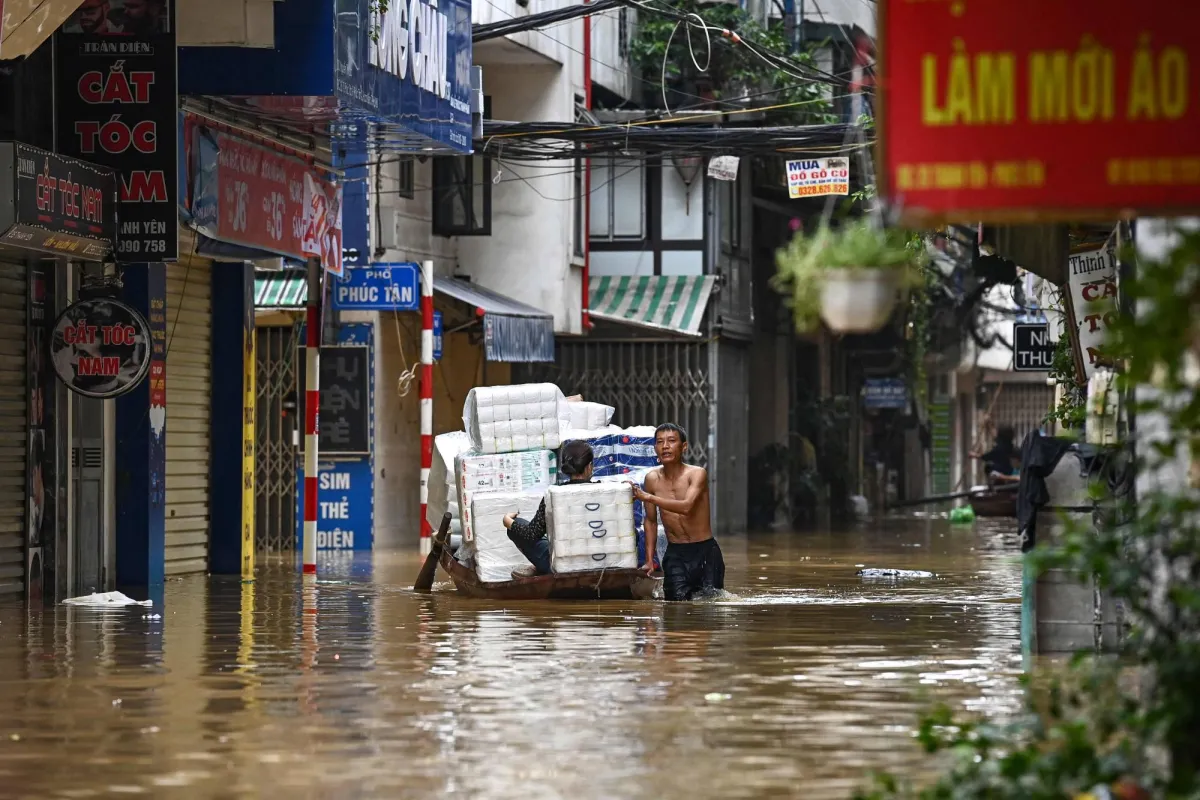Torrential rains leave 41 dead, widespread destruction across central Vietnam
Torrential rains, floods and landslides in central Vietnam killed at least 41 people and left several missing, inundating more than 52,000 homes and damaging tens of thousands of hectares of crops. The scale of the event has disrupted power, transport and key agricultural and tourism sectors, posing an immediate humanitarian crisis and mounting economic costs for recovery.

Central Vietnam was battered by days of torrential rain that authorities said killed at least 41 people and left several others missing, as widespread floods and landslides inundated towns and farmland and forced large scale rescue operations. State reports and images from the hardest hit areas showed residents stranded on rooftops and rescue teams including naval forces wading through chest deep water to reach isolated communities.
Meteorological and state reports said rainfall exceeded 1,500 millimeters in some locations, about 60 inches, over the period leading up to November 20. That deluge overwhelmed rivers and drainage systems, submerging more than 52,000 homes and damaging tens of thousands of hectares of crops. Local officials described extensive infrastructure damage, with large scale power outages affecting hundreds of thousands of customers and interruptions to rail and air services as lines and runways were reported to be flooded or unsafe.
Search and rescue efforts continued into November 21, with naval units and emergency teams deployed to coordinate evacuations and deliver food and medical supplies to stranded residents. Local authorities were focused on reaching remote communes where landslides severed road access, and on assessing immediate needs for shelter and health services. The government reported that several people remained unaccounted for as teams scoured mud swept slopes and submerged districts.
The economic implications are significant. Central provinces that bore the brunt of the storms are important for coffee production and domestic tourism, two sectors that underpin rural incomes and export revenues. Vietnam is one of the world’s largest coffee exporters, and damage to tens of thousands of hectares of crops threatens near term supply from the affected harvests and could tighten local farm incomes. Tourism dependent towns along the coast face lost revenue as infrastructure repairs and safety concerns deter visitors in the peak travel season.
Power outages and transport suspensions added immediate logistical challenges. Cargo movements by road, rail and air were disrupted, complicating efforts to move relief supplies and to begin assessments of crop and infrastructure losses. Early estimates of damage were not immediately available from central authorities, but the combination of submerged homes, ruined paddy fields and damaged local roads points to a recovery bill that will strain municipal budgets and require central assistance.
Experts say the event underscores longer term vulnerabilities as extreme rainfall events have become more frequent in the region in recent years. That trend amplifies the urgency of investments in resilient infrastructure, improved early warning systems and land use planning to reduce the risk of deadly landslides. In the immediate term, priorities for authorities include continuing search and rescue operations, restoring power and transport links, and delivering shelter and medical aid to tens of thousands of displaced people.

